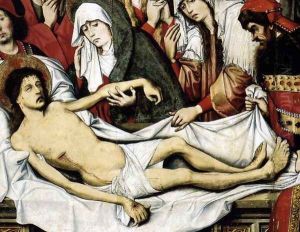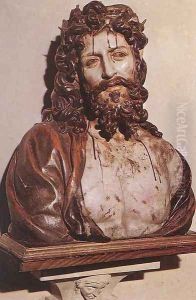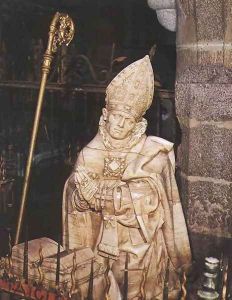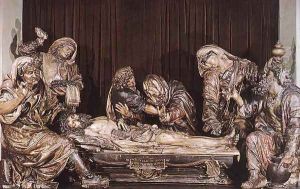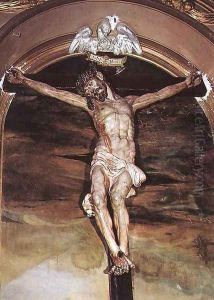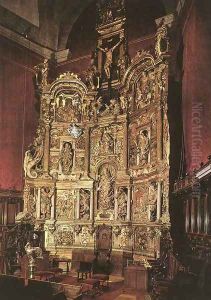Juan De Juni Paintings
Juan de Juni was a significant figure in the Renaissance art movement, particularly renowned for his contributions to Spanish sculpture. Born in 1506 in Joigny, France, Juni's early life and training are somewhat obscured, but it is known that he was of French origin and moved to Spain, where he would make a lasting impact on the Renaissance sculptural landscape. His work is characterized by a deep emotional expressiveness and a mastery of form and detail that aligns with the Spanish religious fervor of the time.
Juni spent a significant portion of his career in Valladolid, Spain, where he established himself as a leading sculptor. His works often reflected the intense spiritual preoccupations of Counter-Reformation Spain, imbued with a dramatic sense of realism and emotion. Among his most celebrated works is the 'Entombment of Christ' (also known as 'The Burial of Christ'), created for the church of San Benito el Real in Valladolid. This masterpiece is noted for its lifelike representation and the intense emotion depicted in the figures mourning Christ.
Another notable aspect of Juni's work is his adept use of polychromy, a technique that involves painting on sculpture to add color and enhance realism. This technique became a hallmark of Spanish Renaissance sculpture, largely due to Juni's mastery and innovation. His influence extended beyond his lifetime, contributing significantly to the development of the Spanish sculpture tradition.
Juni's contributions were not limited to religious themes; however, these works are what have most enduringly captured the public and critical imagination, reflecting the intense spirituality and dramatic expressionism that characterize the Spanish Renaissance. He died in 1577 in Valladolid, leaving behind a legacy that would influence generations of artists in Spain and beyond. His work remains a testament to the power of art to evoke deep emotional and spiritual experiences.
